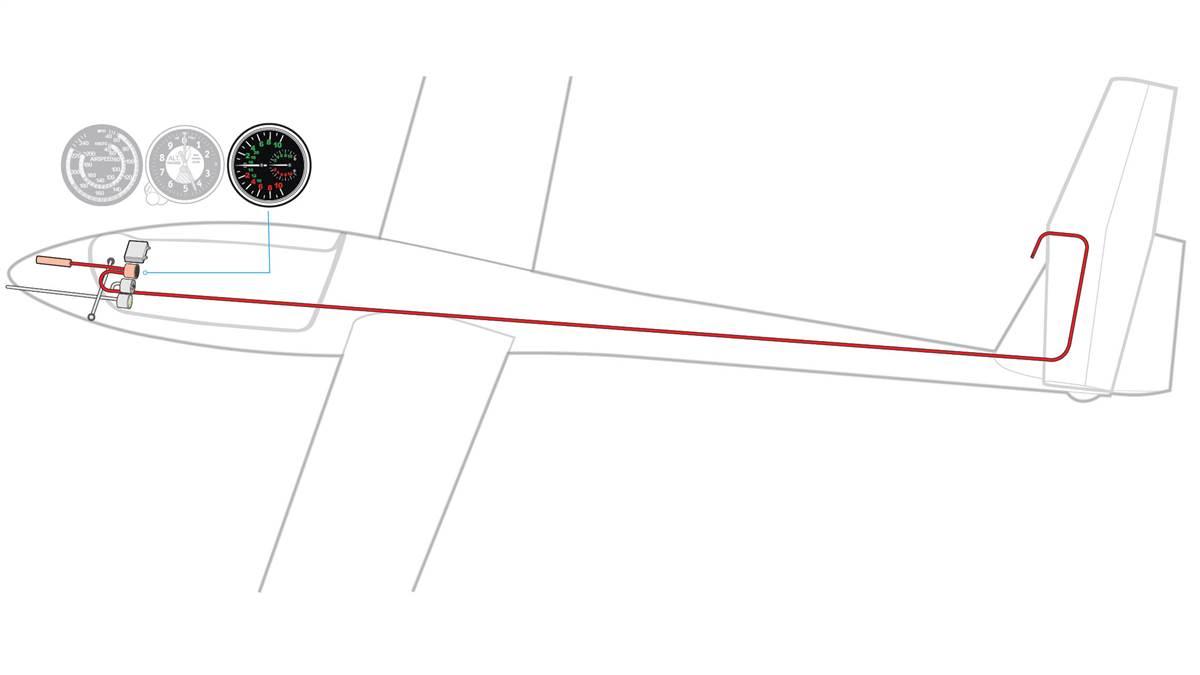How it works: Total energy variometer
Measuring the ups and downs of soaring

(Illustration by Steve Karp)
Both instruments rely on the principles that air pressure decreases with altitude, and that pressure tends to equalize, with air flowing from high pressure areas to low pressure areas. In a simple variometer, tubing runs from a reference chamber to an outside static source. The static air pressure decreases in a climb and the air inside the chamber expands; the variometer measures the rate of airflow coming out of the chamber, either mechanically or using a heat-sensitive electrical resistor. The instrument shows a rate of climb and, in the case of many electrical variometers, beeps or tones give the pilot an aural indication of climbs and descents.
Powered pilots look at the rate of climb or descent, and that’s that. With both pitch and power adjustments at their fingertips, they tend to assume any climb or descent is mostly because of what they’re doing. But glider pilots are interested in the energy outside the aircraft.
Pulling back on the stick trades airspeed (kinetic energy) for altitude (potential energy), but it doesn’t add any energy to the equation. Rising air such as in thermals, however, supplies the kind of lift that can keep sailplanes aloft for hours. An uncompensated variometer shows a climb no matter the cause, so a pilot might
mistake a self-induced “stick thermal” for a
real thermal. Total energy systems solve this problem by compensating for the speed of the aircraft.
Some total energy systems use a small probe mounted in undisturbed airflow, often ahead of the tail fin, that is connected to the static outlet of the variometer. When airspeed decreases in a climb, suction from the probe decreases and offsets the pressure at the static outlet of the variometer; in a descent, increasing airspeed increases suction. You’re left with an indication of the movement of the air mass around you.



